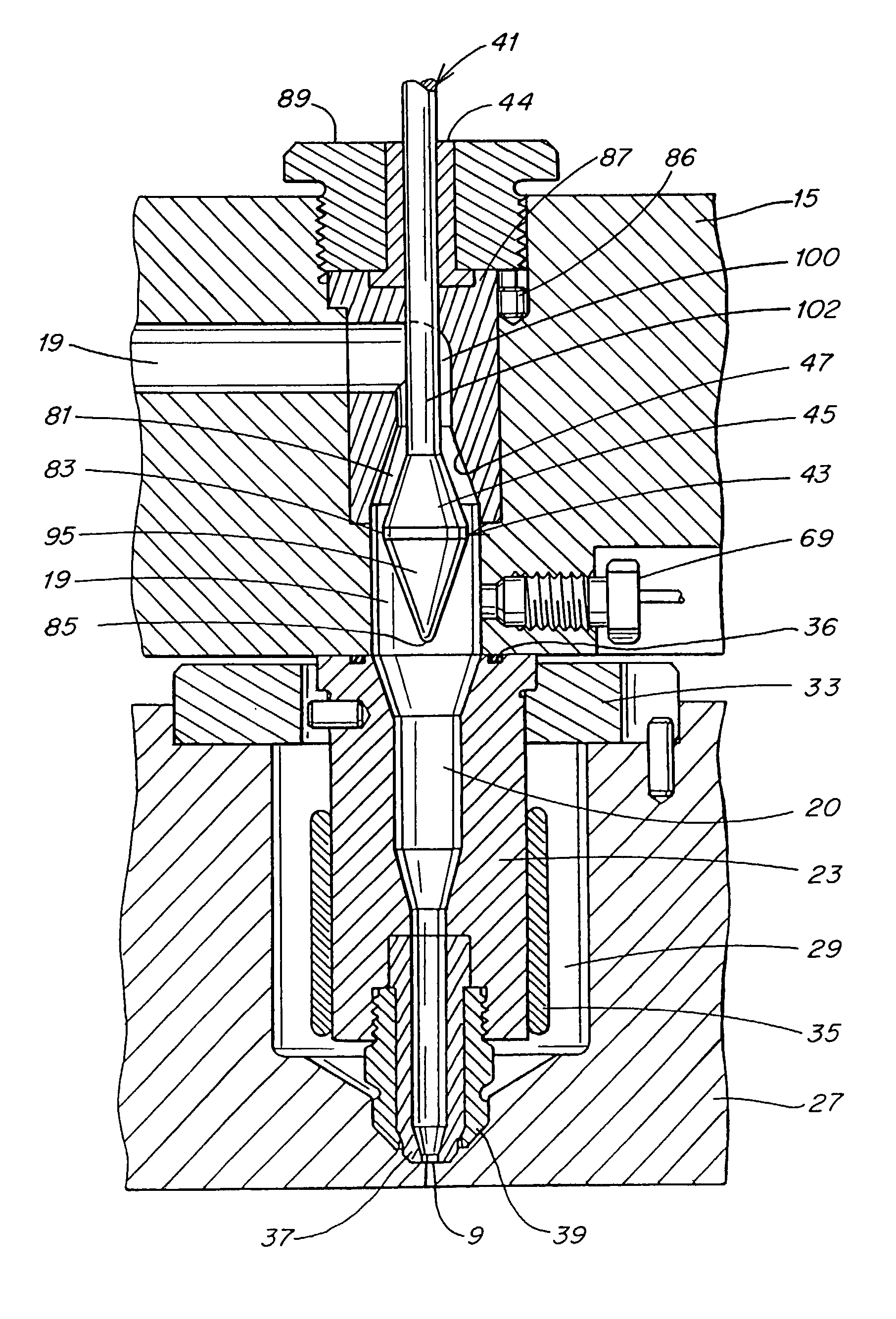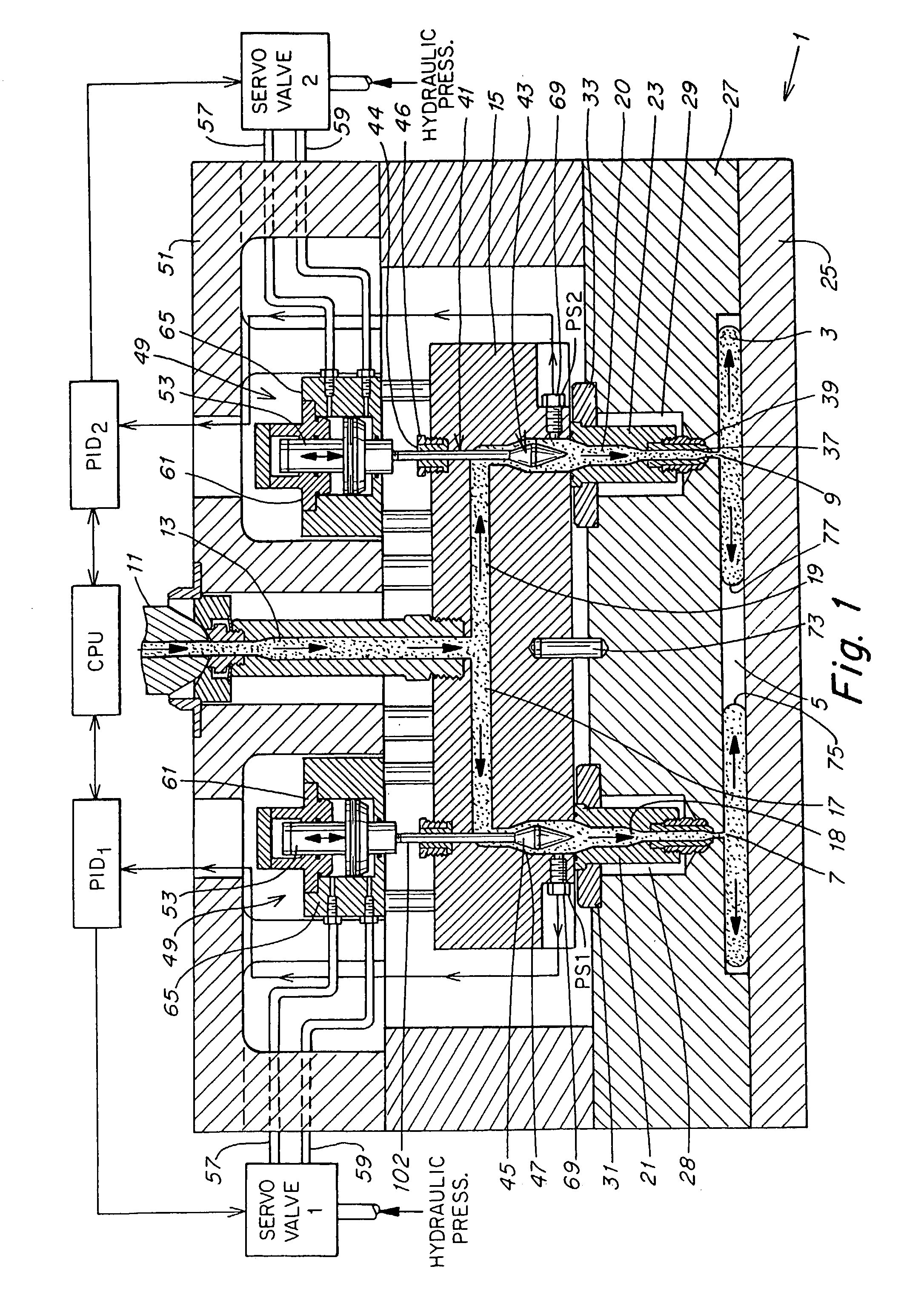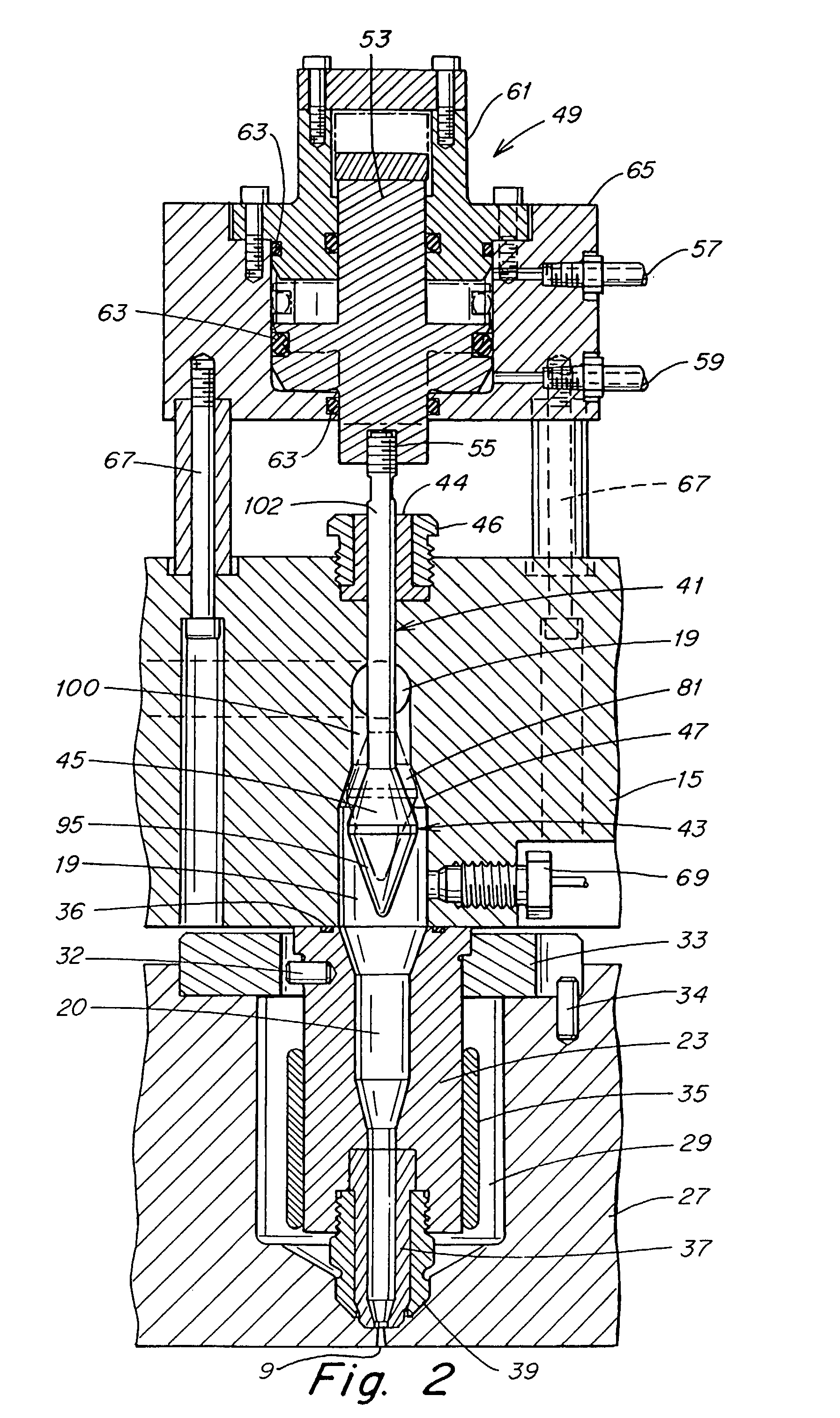Apparatus and method for utilizing an actuator for flow control valve gates
- Summary
- Abstract
- Description
- Claims
- Application Information
AI Technical Summary
Benefits of technology
Problems solved by technology
Method used
Image
Examples
Embodiment Construction
[0004] 1. Field of the Invention
[0005] This invention relates to injection of pressurized materials through a distribution system, such as injection molding of plastic melt in a hot runner injection molding system. More specifically, this invention relates to an improved injection molding system in which the rate of material flow through two or more gates is independently controlled.
[0006] 2. Description of the Related Art
[0007] U.S. Pat. No. 5,556,582 discloses a multi-gate single cavity system in which the rate of melt flow through the individual gates is controlled independently via a control system according to specific target process conditions.
[0008] This system enables the weld line of the part (the section of the part in which the melt from one gate meets the melt from another gate) to be selectively located. It also enables the shape of the weld line to be altered to form a stronger bond.
[0009] The '582 patent discloses controlling the rate of melt flow with a tapered valve...
PUM
| Property | Measurement | Unit |
|---|---|---|
| Flow rate | aaaaa | aaaaa |
Abstract
Description
Claims
Application Information
 Login to View More
Login to View More - Generate Ideas
- Intellectual Property
- Life Sciences
- Materials
- Tech Scout
- Unparalleled Data Quality
- Higher Quality Content
- 60% Fewer Hallucinations
Browse by: Latest US Patents, China's latest patents, Technical Efficacy Thesaurus, Application Domain, Technology Topic, Popular Technical Reports.
© 2025 PatSnap. All rights reserved.Legal|Privacy policy|Modern Slavery Act Transparency Statement|Sitemap|About US| Contact US: help@patsnap.com



